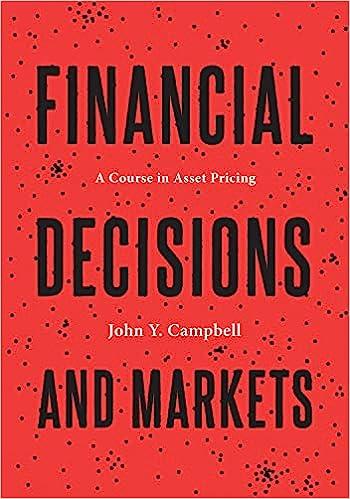In racetrack betting, a ($ 1) bet placed at odds of 5:1 pays ($ 6) if you
Question:
In racetrack betting, a \(\$ 1\) bet placed at odds of 5:1 pays \(\$ 6\) if you win, and \(\$ 0\) if you lose. The odds ratio in this example is 5 . A gambler who believes that he has inside information has an "edge" equal to the expected profit per \(\$ 1\) bet. For example, if the gambler believes the \(5: 1\) bet will pay off with probability \(1 / 2\), the expected payout on a \(\$ 1\) bet is \(\$ 3\), the expected profit is \(\$ 2\), and the edge is 2 .
The "Kelly rule" is a famous formula that tells gamblers what fraction of their money to bet on each race. The formula is
\[
\begin{equation*}
k=\frac{\text { edge }}{\text { odds }} \tag{2.66}
\end{equation*}
\]
or \(2 / 5\) in the example above.
(a) Is it possible for a gambler using the Kelly rule to go bankrupt? Explain.
(b) Find a utility function for which the Kelly rule is an optimal gambling strategy. (Do not use any formula that assumes small risks, as the Kelly rule may involve large gambles, or that assumes a normal or lognormal distribution for the risk, as the racetrack bet has a discrete distribution.)
(c) Show that if the gambler has no edge-that is, if the bet is fair-the odds ratio equals the variance of the payoff to a \(\$ 1\) bet.
(d) Relate your analysis to the formulas for optimal portfolio choice developed in this chapter.
(e) It has sometimes been argued that the Kelly rule is optimal for all gamblers. Do you agree?
Step by Step Answer:

Financial Decisions And Markets A Course In Asset Pricing
ISBN: 9780691160801
1st Edition
Authors: John Y. Campbell





